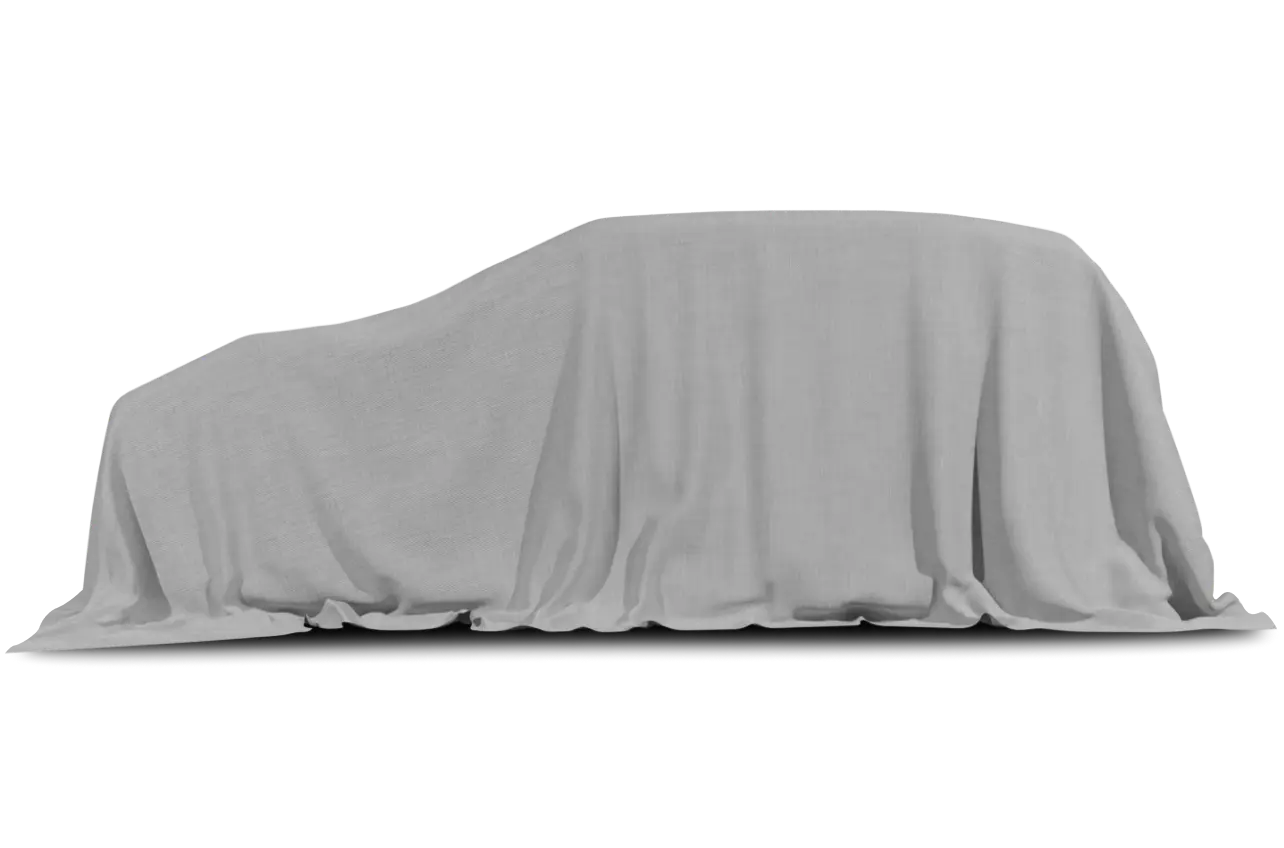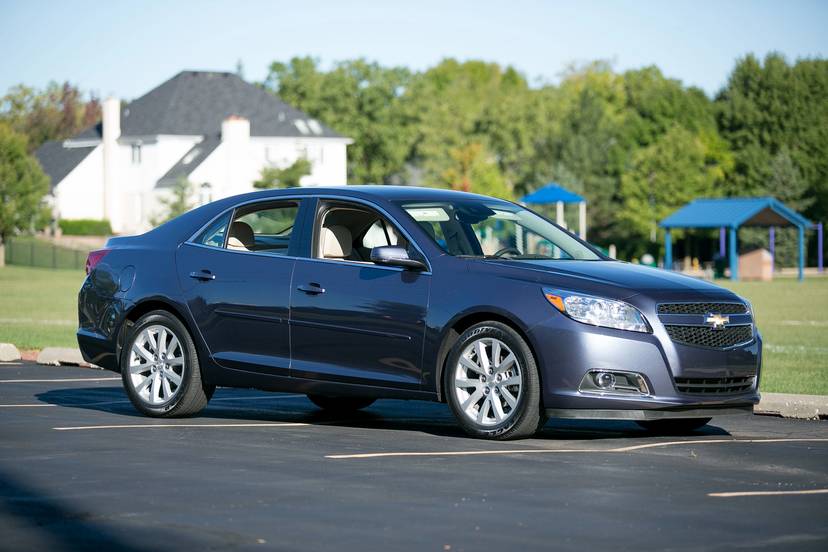
Editor’s note: This review was written in July 2009 about the 2010 Buick LaCrosse. Little of substance has changed with this year’s model. To see what’s new for 2011, click here, or check out a side-by-side comparison of the two model years.
Buick’s goals with each new car seem the same: Get less stodgy and attract younger buyers. The redesigned LaCrosse’s insipid TV ads may not help the cause, but the car they feature should. The LaCrosse is comfortable, luxurious and easily the best-looking Buick since the Clinton administration. More important, Buick didn’t turn it into a sport sedan — something no one ever asked of the brand, and a temptation I’m glad GM didn’t give in to.
So did the General accomplish its mission? I’d like to think so. I’m in my 20s, and I want one.
Trim levels for the LaCrosse include the base CX, CXL and more-powerful CXS. All-wheel drive is optional on the CXL. With this redesign, the LaCrosse moves to a new platform from last year’s Chevrolet Impala-based model. I test-drove all three trim levels of the 2010 version; you can compare it to the 2009 version here.
A Better-Looking Buick
Designed mostly in China, where Buick enjoys strong sales, the LaCrosse is an exercise in well-proportioned grace. The front juts out enough that it should give the car an ungainly, pancaked appearance, but GM still gets away with it. I can’t quite explain how, except to say the car’s face hides the overhang in a way the outgoing LaCrosse’s bulbous nose could not. I’m no aesthete; I just know when a car looks right, and the new LaCrosse does. You might disagree, but 10 bucks says that most of you won’t. (Actually, I make a journalist’s salary. Let’s make that five bucks.)
All versions of the LaCrosse get chrome accents on the door handles, trunk and grille. Unfortunately, they also get Buick’s signature portholes, moved to an awkward perch atop the hood. Most onlookers agreed — these faux engine vents hurt an otherwise sharp design.
On the Road
The LaCrosse moves out when pushed, but its capabilities stop short of an all-out sport sedan’s — fine by me, seeing as no one ever wanted Buick to build the next BMW. The LaCrosse CXS, which packs the 3.6-liter V-6 from GM’s three-row crossover SUVs, moves about as swiftly from stoplights as Lexus’ ES 350, which is to say its power is strong but not quite effortless.
The CXS’ six-speed automatic transmission handles upshifts smoothly; it kicks down with a slight delay but picks a gear and stays there, allowing uninterrupted passing power when you need it. In comparison, the ES 350’s automatic seems to hunt for the right gear.
The LaCrosse CX and CXL get a smaller 3.0-liter V-6, also with a six-speed auto. Highway passing power is similar to what the CXS can muster, but getting up there takes a bit more time, as there’s less immediate power available when the light turns green.
The more noticeable difference comes with all-wheel drive. It’s available only on the CXL, and it adds just 180 pounds — fairly light, as all-wheel-drive systems go — but that’s enough to reduce passing power noticeably. Buick says the CXL received all-wheel drive at the car’s introduction because it’s the LaCrosse’s top-selling trim level. I’d like to see the CXS and its larger V-6 offer it soon; all-wheel-drive buyers could certainly use the extra oomph.
A four-cylinder engine will be available late this year in the LaCrosse CX. At GM’s media preview, there were no four-cylinders available to test, but once we get one I’ll add my impressions. Buick says EPA gas mileage should work out to about 20/30 mpg city/highway — better than any immediate competitor, though none of them offer four-cylinder engines.
With front-wheel drive, the 3.0-liter V-6 gets an EPA-estimated 17/26 mpg. That’s comparable to the mileage in an Acura TL or Lincoln MKZ, if a bit short of the ES. On the upside, Buick says its drivetrains run fine on regular fuel. The ES recommends premium, and the TL requires it. This will save drivers money at the pump.
The EPA hasn’t listed official figures for other trims, but Buick’s estimates have the all-wheel-drive LaCrosse’s mileage dropping to 16/26 mpg (comparable to the all-wheel-drive TL and MKZ) and the 3.6-liter V-6 coming in at 17/27 mpg. Buick also estimated the 3.0-liter at 17/27, though, so don’t be surprised if it comes down to 17/26 when the EPA chimes in with its rating.
Cruising, Turning & Stopping
Ride comfort is still king at Buick, and it’s a formula GM shouldn’t change. The LaCrosse leaves manhole covers and steel plates behind with the sort of measured wump that you’ll notice but won’t care much about. Taut suspensions are all the rage these days; cars like the Lincoln MKS, Nissan Altima and Mercury Milan ride on the firm side. It’s nice to see Buick held the line.
The steering wheel turns with Lexus-like smoothness; in parking lots, turning is a two-fingered affair.
There’s noticeable steering play at 12 o’clock on the highway, though, so you’ll have to get used to making periodic course corrections. On curvier roads, handling isn’t as razor-sharp as a genuine sport sedan — there’s more steering slop and body roll on curvy roads, for example, than in a TL or Infiniti G37 — but Buick fans may find this a step in the more athletic direction.
The LaCrosse CXS offers an $800 Touring Package that adds an adaptive suspension and swaps the standard 18-inch wheels for 19s. It also incorporates a Sport mode. While in Drive in a LaCrosse equipped with the Touring Package, ride quality wasn’t noticeably better than non-Touring suspensions. Road noise is more noticeable, going from whisper-silent with the lower trim levels’ 17- and 18-inch wheels to noticeable with the Touring Package’s 19-inchers.
Activate Sport mode in a LaCrosse with the Touring Package, and the suspension dials in firmer settings, the automatic holds low gears longer to maximize acceleration, and the steering reduces power assist. On twisty roads, the LaCrosse stays markedly flatter in corners, but in town you’ll want to move the gearshift back to Drive, otherwise patches of rough pavement will find their way to your backside a bit easier.
The lessened power-steering assist in Sport mode also alleviates some of that highway steering play, and the effect makes for a more settled, planted sensation, with fewer course corrections needed. The wheel remains easy enough to turn at lower speeds, too. Buick ought to have standardized Sport mode’s steering calibrations across all trims.
Four-wheel-disc antilock brakes are standard, but the pedal doesn’t elicit a particularly strong response. Under hard braking, the car’s nose dives excessively.
The Inside
Like the pricier CTS sedan from sister brand Cadillac, the LaCrosse’s dashboard is trimmed in a leather-like material with stitched seams and padded finishes. Ambient lighting pipes across the dashboard at night, and the woven headliner material extends down the window pillars. These are small details, but they go a long way toward convincing those with sticker shock that Buick’s midsize sedan’s price premium is deserved. It’s just north of a well-equipped Chevy Malibu, but still well south of the base CTS.
Options include a heated steering wheel, a rear-window power sunshade, and heated and ventilated front seats. That makes for a lot of center controls to sort through; get all the toys, and the dash has more sprawl than Los Angeles County. There’s still quite a spread even in base models without those options, and their white-on-silver finish washes out in sunlight. On the upside, GM’s stereo setup is as user-friendly as always, with on-screen labels for your favorite radio stations — i.e., “93.1” or “104.3” instead of “preset 1” or “preset 2” — and the ability to program AM, FM and satellite radio stations into the same list of presets.
As in the CTS, a radio recording system is optional. The version in the LaCrosse buffers up to 30 minutes of AM, FM or satellite radio, allowing you to pause, rewind and fast-forward in TiVo-like fashion. The convenience possibilities are promising — you could pause the game to run into the store, for example — but you’d have to leave the keys in the ignition; Buick says the system resets the buffer when you turn the car off. Bummer. The standard yearly subscription to OnStar’s Directions and Connections plan includes turn-by-turn navigation. If you want a map, the optional in-dash navigation system — it’s GM’s latest generation — has excellent graphics and quick response: Zoom in on the map or jump to a submenu, and it happens now. After all these years, I’d become accustomed to navigation systems taking a second or two to react.
Seating & Cargo
The standard eight-way power driver’s seat offers plenty of adjustment range, so spouses of wide-ranging sizes should have no trouble finding their fit. If you’re much taller than 6 feet, avoid the optional dual-pane moonroof, as it cuts headroom significantly. At 5-foot-11, I found the driver’s seat roomy enough, and the optional leather seats have enough side bolstering to provide un-Buick-like levels of curvy-road support without being so sculpted that it’s hard to slide into the car. On the flip side, I found the driver’s seat had too much lumbar support even with it dialed back to zero, and a vertical seam in the backrest kept digging into my spine. The cloth seats in the LaCrosse CX don’t have these issues, and they’re exceptionally comfortable. They’re less expensive, too.
Less comfortable is the backseat: Legroom and headroom are good, but the seat sits too low to the ground to provide adult-sized thigh support. It’s a more generous setup than small luxury cars like the Acura TSX or BMW 3 Series, but others in this price range — particularly the Toyota Camry and Honda Accord — have roomier confines.
The trunk has a narrow opening, made narrower on both sides by trunklid supports. At any rate, it’s not particularly roomy: Overall volume, at 13.3 cubic feet in the CX and CXL, leads the TL (13.1 cubic feet) but trails the ES 350 (14.7) and MKZ (16.5). Subwoofers for the upgraded stereo, which is standard on the CXS, reduce volume to 12.8 cubic feet.
Features & Safety
The LaCrosse has yet to be crash-tested by the Insurance Institute for Highway Safety. Standard safety features include antilock brakes, an electronic stability system and six airbags. Seat-mounted backseat side airbags are optional, raising the airbag total to eight. A blind-spot warning system and adaptive cornering headlights, which automatically swivel a few degrees to illuminate upcoming curves when you turn the steering wheel, are optional. Click here for a full list of safety features.
The V-6-powered LaCrosse CX starts at $27,085, though the introduction of a four-cylinder CX later this year will likely lower that figure. Standard features include a power driver’s seat, single-zone automatic climate control and a CD stereo with an MP3 jack and steering-wheel audio controls. CXL models ($29,645) add leather upholstery, alloy wheels, a power passenger seat, dual-zone climate control and heated front seats; all-wheel drive runs an extra $2,175. The CXS ($33,015) adds the larger V-6, rear parking assist, Harman Kardon audio and a slew of other luxury features. Most of them are optional on the CXL.
Additional options include a panoramic moonroof, a navigation system with a backup camera, xenon headlights and a backseat DVD system with a screen behind each front-seat head restraint. Load up the LaCrosse, and the sticker ends up around $41,000.
LaCrosse in the Market
The LaCrosse isn’t a product of the yesteryear thinking that drove GM to build a competitor to whatever Lincoln was building across town. That’s the sort of culture that got GM into trouble in the first place. Susan Docherty, vice president of Buick, GMC and the soon-to-be erstwhile Pontiac, told journalists at the LaCrosse introduction that the car must make Buick “relevant to people in their 40s and 50s.” Right now, typical Buick buyers are in their 70s, Docherty said.
The LaCrosse has potential to change this. Let’s just hope it proves dependable: So many promising GM products, from the redesigned CTS to the company’s three-row crossovers, have received sour reliability scores a year or two out of the gate. Others, like the Chevy Malibu, have done better — and the LaCrosse rolls off the Malibu’s Kansas City assembly line. I’m keeping my fingers crossed, because Buick has a heck of a car here.
| Send Kelsey an email |
























































